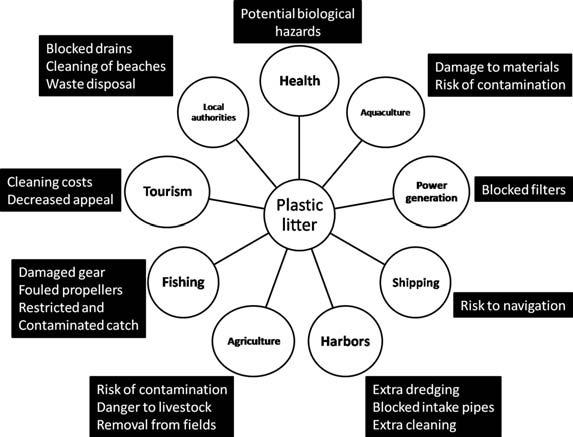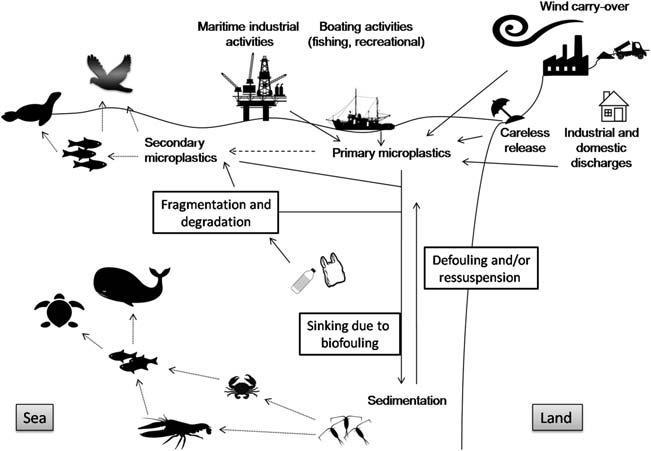AdvisoryBoard
JosephA.Caruso
UniversityofCincinnati,Cincinnati,OH,USA
HendrikEmons
JointResearchCentre,Geel,Belgium
GaryHieftje
IndianaUniversity,Bloomington,IN,USA
KiyokatsuJinno
ToyohashiUniversityofTechnology,Toyohashi,Japan
UweKarst
UniversityofMu¨nster,Mu¨nster,Germany
Gyro¨gyMarko-Varga
AstraZeneca,Lund,Sweden
JanuszPawliszyn UniversityofWaterloo,Waterloo,Ont.,Canada
SusanRichardson
USEnvironmentalProtectionAgency,Athens,GA,USA
1.
JoaoPintodaCosta,ArmandoC.Duarte,TeresaA.P.Rocha-Santos
8. AdvancedAnalyticalTechniquesforAssessingthe ChemicalCompoundsRelatedtoMicroplastics
LorenaM.RiosMendoza,SatieTaniguchi,HrissiK.Karapanagioti 1.Introduction
2.5BrominatedFlameRetardants213
3.EnvironmentalOrganicContaminantsSorbed
4.ExtractionofOrganicCompoundsFromMicroplastics
4.4AcceleratedSolventExtraction226
4.5ComparisonoftheDifferentExtractionMethods226
5.CleanUp PurificationandSeparationoftheCompounds
9. TheRoleofLaboratoryExperimentsinthe
CatherineMouneyrac,FabienneLagarde,Ame´lieChaˆtel, FarhanR.Khan,KristianSyberg,AnnemettePalmqvist
1.Introduction
2.MicroplasticsUsedinLaboratoryExperiments
2.1RepresentativenessofMicroplacticUsedinLaboratory ExperimentsforMicroplasticsFoundintheEnvironment243 2.2ValidatingtheMicroplastic‘VectorEffect’248
3.TypicalExperimentalDesignsforTestingEffects ofMicroplastics
ContributorstoVolume75
CatarinaArau ´ jo,CICECO,UniversityofAveiro,Aveiro,Portugal
GianvitoCaputo,IstitutoItalianoDiTecnologia,Genova,Italy
Ame´lieChaˆtel,Universite ´ Catholiquedel’Ouest,Angers,France
MonicaF.Costa,UniversidadeFederaldePernambuco,Recife,Brazil
Joa˜oPintodaCosta,UniversityofAveiro,CESAM,Aveiro,Portugal
ArmandoC.Duarte,UniversityofAveiro,CESAM,Aveiro,Portugal
MartaC.Ferro,CICECOandDepartmentofMaterialsandCeramicEngineering, UniversityofAveiro,CampusdeSantiago,Aveiro,Portugal
AnaVioletaGira ˜ o,CICECOandDepartmentofMaterialsandCeramicEngineering, UniversityofAveiro,CampusdeSantiago,Aveiro,Portugal
HrissiK.Karapanagioti,UniversityofPatras,Patras,Greece
FarhanR.Khan,RoskildeUniversity,Roskilde,Denmark
PeterKusch,Bonn-Rhein-SiegUniversityofAppliedSciences,Rheinbach,Germany
FabienneLagarde,Universite ´ duMaine,LeMans,France
CatherineMouneyrac,Universite ´ Catholiquedel’Ouest,Angers,France
MarielaM.Nolasco,CICECO,UniversityofAveiro,Aveiro,Portugal
AnnemettePalmqvist,RoskildeUniversity,Roskilde,Denmark
RuthPereira,InterdisciplinaryCentreofMarineandEnvironmentalResearch (CIIMAR/CIMAR),Porto,Portugal;FacultyofSciencesoftheUniversityofPorto, Porto,Portugal;GreenUP/CITAB-UP,Porto,Portugal
GerritRenner,NiederrheinUniversityofAppliedSciences,Krefeld,Germany; UniversityofDuisburg-Essen,Essen,Germany
PauloRibeiro-Claro,CICECO,UniversityofAveiro,Aveiro,Portugal
LorenaM.RiosMendoza,UniversityofWisconsin-Superior,Superior,WI, UnitedStates
TeresaA.P.Rocha-Santos,UniversityofAveiro,CESAM,Aveiro,Portugal
FinallyIwouldliketothankspeciallyTeresaandArmandofortheamount ofwork,timeandexpertisedevotedaseditorsofthisbook.Iwouldliketo acknowledgeaswelltothevariouswell-knownauthorsfortheircontributions incompilingsuchaworld-classandtimelybookfortheCACseries.
´ , IDAEA-CSIC,BarcelonaandICRA,Girona,December9,2016, EditorinChiefoftheComprehensiveAnalyticalChemistrySeries.
D.Barcelo
Preface
Microplasticsareplasticparticleswithlessthan5mminsizeandphysicochemicalproperties(e.g.,overallsize,density,colour,andchemicalcomposition)thatarekeycontributorstotheenhancementoftheirbioavailabilityto organisms.Mainlyduetotheirsmallsize,microplasticshavethepotentialof beingingestedbybenthicandplanktonicorganisms,thusenteringmarinefood webswithaverylowpotentialofbiodegradation.Therefore,adetailed qualitativeandquantitativemonitoringofmicroplasticsinthemarineenvironmentishighlyrequired,andinfactitisalreadyrecommendedwithinthe frameworkoftheMarineStrategyFrameworkDirective(MSFD).Duetothe methodologycurrentlyused,thescarcedataonmicroplasticsconcentrations aremostlybiasedtowardslargerparticles.Furthermore,differencesobserved indifferentstudiesintermsofconcentrationandcompositionbypredominant typesofmicroplasticscouldalsobeduetosignificantmethodologicaldifferences.Comparisonofthequantitativeresultsobtainedbypublishedworks wouldbeveryinterestingandofutmostimportance,butstillisaveryhardor evenimpossibletasktoperform.Therefore,reliabledataonconcentrationsof microplasticsinmarinesystemsandotherenvironmentalcompartmentsare stilllacking,whichmakesthisbookaverytimelyandusefulinstrumentfor dealingwithsuchahottopic.Thiscomprehensiveoverviewanddiscussion aimsmainlyatfulfillingthegapontheknowledgeabouttheanalyticaltechniquesandanalyticalmethodologiesformicroplasticsidentificationand quantificationbasedonpublishedworks.Thisoverviewincludestheassessmentofsamplingtechniquesandsamplehandling,morphological,physical andchemicalcharacterizationofmicroplastics,andtheroleoflaboratory experimentsinthevalidationoffielddata.Chapter1producesthestateofthe artontheoccurrence,fateandbehaviourofmicroplasticsintheenvironment, andithighlightstheneedforanalyticalmethodologiesfitforpurpose.Chapter 2introducesanddiscussesdifferentsamplingstrategiestobetakenintoaccountforensuringtheappropriatecollectionofmicroplasticsfromseveral environmentalcompartments.InChapter3themethodologiesusedforcharacterizationofthemorphologicalcharacteristicsofmicroplastics,suchas shapeand/orthecolour,andthephysicalcharacteristicsofmicroplastics,such assize,arediscussedandputintoperspective.Chapters4and5providean overviewanddiscusstheanalyticalmethodologiesassociatedwithinfrared spectroscopyandRamanspectroscopyforcharacterizationofmicroplastics.
Themainfeatureofthesematerialsisreflectedintheiretymology:the wordplasticoriginatesfromtheGreekwords plastikos (plassiko ´ 2),meaning ‘capableofbeingshaped’,and plastos (plasso ´ 2),meaning‘molded’ [2]. Otherfeaturesincludeeaseofmanufacture,lowcost,imperviousnesstowater andchemical,temperature,andlightresistance [3].Thesecharacteristicshave ledplasticstoreplaceanddisplacemanymaterials,includingwood,paper, stone,leather,metal,glassandceramicand,currently,plasticsarepresentin ahugeandexpandingrangeofproducts,frompaperclipstospaceships [4] Thissuccesshasmanifesteditselfundermanyforms,includingthermoplastics,naturalandmodifiedpolymers,and,morerecently,duetoincreasing environmentalconcerns,biodegradableplastics [5].Themostcommonlyused typesofplastic,includingtheirspecificgravityandapplications,arehighlightedin Table1.Hence,consideringthisversatility,itisnotsurprisingthat thelastdetailedreportontheannualglobalproductionofplastics,for2015, showedittoexceed310milliontonnes [6]
Whilethebenefitsofplasticsareundeniable,thiswidespreaduseofplastics, namelyindiscardableform,suchaspackagingmaterials,ultimatelyleadsto theiraccumulationintheenvironmentanditisestimatedthatplasticwaste constitutesapproximately10%ofthetotalmunicipalwasteworldwide [7]
Althoughafractionofthisplasticwasteisrecycled,mostofitendsupin landfills,wheretheymaytakeafewhundredyearstodecompose [9]. However,ofspecialconcernareplasticsthatenterthemarineenvironment, whichhavebeencalculatedtobe ca.10%ofthetotalplasticsproduced [10]. Theselargerplasticdebris,knownas ‘macroplastics’,havelongbeenthe focusofenvironmentalresearch,includinginspecificareasoftheocean, wheretheytendtoaccumulate,duetotheconvergenceofsurfacecurrents, theytendtoaccumulate [11],asisthecaseoftheGreatPacificGarbage Patch,illustratedin Fig.1
Thisfloatingdebrisiscontinuouslymixedbytheconcertedactionsofwind andwavesandbecomeswidelydispersedoverhugesurfaceareasandacross thetopportionofthewatercolumn [13].Besidestheobviousaesthetic consequences,whichmayhaveeconomicrepercussionsintourism,the environmentalimpactsoftheseparticlesincludeentanglement,ingestion, smothering,hangers-on,hitch-hikingandalieninvasion,asthesefloating debriscanconstitutenewroutesforinvasivespecies [3].Interestingly,ithas alsobeenreportedthatthespeciesfoundassociatedwiththeseplasticdebris, knownasthePlastisphere,cansometimesdiffergreatlyfromthefree-floating microbialcommunitiescommonlyfoundintheoceans [14].Nonetheless, thereareotherperhapslessfrequentlyrecognizedenvironmentalriskscaused byplasticdebris,includingriskstoshipping,fisheriesandothermaritime activities,suchasenergyproductionandaquaculture [15].Thesearehardly thesoledangersposedbyplasticlitteratseaand,inspiteofthelimitedstudies detailingitssocioeconomicimpacts,themainsectorsaffectedhavebeen identified,asdepictedin Fig.2.Theseconsequencesarenotconfinedto

FIGURE2 Thesocioeconomicimpactsoflitteratsea. AdaptedfromJ.P.daCosta,P.S.M. Santos,A.C.Duarte,T.Rocha-Santos,(Nano)plasticsintheenvironment sources,fatesand effects,Sci.TotalEnviron.566 567(2016)15 26.
1.2PrimaryMicroplastics
Primarymicroplasticsaremanufacturedtohaveamillimetricor submillimetricsize,andtheycanbefoundinhouseholditems,air-blasting media,personalhygieneproducts,suchasfacialcleansers,toothpasteand exfoliatingcreamsand,toasmallerextent,inmedicine,namely,asdrug vectors [3].Forexample,ithasbeenestimatedthatapproximately6%ofthe liquidskin-cleaningproductssoldintheEuropeanUnion,Switzerlandand Norwaycontainmicroplastics,ofwhichover93%consistofpolyethylene (PE) [22].Afteruse,microplasticspresentinsuchproductsarefrequently disposedofandcanreachtheenvironmentthroughwastewatercollectionand treatmentsystems.Thecurrentlywidespreaduseof3Dprintersalsoconstitutesasourceofthesepolymericmaterials,as3Dprintinghasbeenshownto releaseparticlesassmallas11.5nm [23].Anotherkeysourceofprimary microplasticsistherawmaterialsusedinthefabricationofplasticproducts. Accidentalloss,inadequatehandling,run-offfromprocessingfacilities,and residuesfromthemanufacturingofplasticmaterialscanalsoaccumulatein theenvironment [24,25].
1.3SecondaryMicroplastics
Secondarymicroplasticsresultfromthebreakdownoflargerplasticparticles. Whenexposedtotheelements,thephysical,biologicalandchemical
zonesofaccumulationforthesedebris [36].Theselarge-scalevorticesactas ‘conveyorbelts’,and,sustainedbywhatareknownasEkmancurrents,collect thefloatingplasticdebrisreleased,whichissubsequentlyaccumulatedinto centralconvergencezones.Despitethetremendouscomplexityofthese distributiondynamics,directmeasurementsofmicroplasticsinthesurface havecorroboratedthesemodels [37,38]
However,microplasticshavebeenfoundtobeconsiderablymore preponderantincoastalareasthaninoffshoreregions [39],somethingthatcan beattributedtoanthropogenicactivities,namely,inpopulatedareaswith intensiveindustrialandcommercialactivities [40].
Inspiteofthelowdensityofthemostcommonlyusedplastics,including PE,low-densitypolyethylene(LDPE),high-densitypolyethylene(HDPE)and polypropylene(PP)(Table1),plasticdebriscanbefoundthroughoutthewater column.Whendirectlyreleasedintotheaquaticenvironment,particlesmade upofmaterialswithaspecificgravity >1tendtosinkandthosewithaspecific gravity <1tendtoremainbuoyant.Nonetheless,thesematerials’densities mayvaryalongthetimeduetoheteroaggregation,aspreviouslymentioned, andalsoduetootherphenomena,includingmicrobialcolonization (biofouling).Theformationofbiofilms,ultimatelyleadingtothepresenceof algaeand/orinvertebrates,hasbeendescribedashavingadramaticeffecton thedensityofthesematerialsinperiodsoftimeasshortas3weeks [41].Such events,combinedwiththenaturalturbulencefoundintheocean,aswellas withtheinteractionsofthesematerialswiththebiota,leadtoadistributionof plasticdebrisacrosstheentiretyofthewatercolumn,acomplexsystem highlightedin Fig.4.
2.2Degradation
Onceintheenvironment,microplasticscanundergodegradationthrough abioticorbioticprocesses,whichmayacteithersimultaneouslyorsequentially.However,thesemechanismsdonotdependsolelyontheenvironmental settingsalone,butalsoonthephysicalandchemicalcharacteristicsofthe polymericmaterials [42].Polyurethanes,forexample,aremorereadily biodegradedduetotheiresterlinkages,andadsorptionhasbeendescribedto favourpositivelychargedovernegativelychargedplasticbeads,owingtothe electrostaticattractionbetweenthechargedplasticparticlesandtheconstituentofthestudiedlivingsystems [43].Thismayalsoaffectthedegreeto whichmicroorganismsmayattachandformbiofilmsoverthesurfaceofthe microplastics,which,inturn,mayinfluencetherateofthebioticdegradation processes.Bothabioticandbiologicaldegradationmechanismsmayalsobe influencedbythecomplexityofthecompositionandpolymericstructureof thesematerials.AsnotedbyLambertetal. [42],plasticswithregularandshort repeatingunitswithhighsymmetries,suchasPP,PEandpolyethylene terephthalate(PET),oftenlimittheaccessibilityofenzymesandaretherefore

FIGURE4 Potentialfate,pathwaysandbiologicalinteractionsofmicroplasticsintheaquatic environment. AdaptedfromW.C.Li,H.F.Tse,L.Fok,Plasticwasteinthemarineenvironment:a reviewofsources,occurrenceandeffects,Sci.TotalEnviron.566 567(2016)333 349.
lesssusceptibletotheactionofthesebiomolecules.Hence,differentblendsof plasticmaterialshavebeendescribedasexhibitingdifferentsensitivitiesto ultraviolet(UV)-mediateddegradation [44].
2.2.1AbioticDegradation
Whenexposedtotheweatheringelements,plasticsundergomechanical disintegration,andexperiencefreeze thawcycles,pressurechanges,water turbulenceanddamagecausedbyanimals.Thismechanicalbreakdown, nonetheless,differsfromdegradation,asthemolecularbondsdonotchange andthematerialssimplyenduremorphologicalmodifications.
Photodegradationisgenerallyconsideredtobethemostefficientabiotic degradationrouteoccurringintheenvironment.Plasticsexposedtoboth visible(400 700nm)andhigh-energyUVradiation(290 400nm)can absorbsuchradiation,leadingtoahigherreactivityoftheirelectrons,inducing oxidationandcleavage,degradationprocessesthataremediated,mostly,by chainscissionandcross-linkingreactions [44].
Thermaldegradationofplasticscausesbondscissionsofthemain polymericchain,leadingtochangesinthepropertiesofthematerial,including alterationsintensilestrength,molecularweight,crystallinityandevencolour. However,thehightemperaturesrequiredforthesemodificationsarehardly observedwheremicroplasticsoccurintheenvironment.Nonetheless,the







